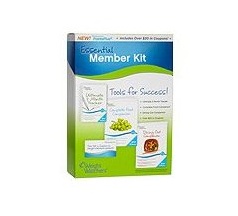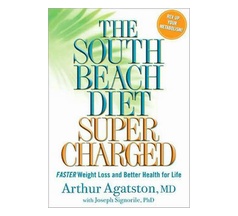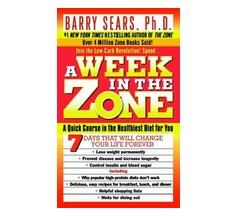Thursday, April 3, 2025
Weight Loss Programs: Compare
Now comparing
Price
Report Card Grade



Pros
Can customize diet plan to fit almost any person and lifestyle (vegetarian, vegan, gluten-free, etc.); teaching nutrition and portion-control from the beginning can make the plan easier to maintain in the long-term; allows for occasional splurges; in-person and online support available; offers pre-made snacks and meals so you can stick to the plan even if you are pressed for time; offers exercise incentives
You don't have to count calories; you can eat snacks and dessert even during Phase 1; lots of reading material and recipes available online; less restrictive and more balanced diet than Atkins in the long term
No foods are banned but some need to be eaten in moderation; if done correctly, you shouldn't feel hungry
Cons
Flexibility of plan may not work for the undisciplined; counting points can be tedious; have to maintain membership which can be costly
Not great for people who can't eat dairy; phase 1 may be too restrictive for some to follow
Complicated and scientific; meticulous portioning can be time consuming; calorie intake is severely restricted; expensive to follow
Price
Food and membership costs vary. Currently, it is $30 to sign up, $19/month for online access and $43/month for unlimited meetings.
Food prices vary. You can purchase The South Beach Diet Supercharged: Faster Weight Loss and Better Health for Life on Amazon for about $7 (est.). You can also sign up as a member on their online site for $4- $5/week.
Food prices vary. You can purchase A Week in the Zone for $10 (est.), and online membership is free. If you want to order the ZoneFast program to start, a 2-week supply costs $180. After that, a week's supply of Zone 1-2-3 foods, like buns and pasta, costs about $75.
Diet Type
Low-Calorie, Balanced
Low-Carb
Balanced
Diet Goals
Weight Loss and General Health
Weight Loss
Weight Loss
Theory
The idea behind the Weight Watchers Program is that you'll eat less and won't feel as hungry if you make healthier food choices that fill you up for longer.
The idea behind the South Beach Diet is that you can lose weight and improve your overall health through a balanced diet consisting of whole grains, vegetables, fruits, lean proteins, low-fat dairy products and healthy fats. Although it is often classified as a low-carb diet, the South Beach Diet doesn't restrict all carbs or make dieters measure their carb intake. In fact, it encourages dieters to eat "good" carbs that have a low glycemic index (GI), and, unlike Atkins, it discourages them from eating "bad" fats (eliminates trans-fats and restricts saturated fats).
The Zone Diet promotes the idea of food not as "a source of calories but as a control system for hormones." By eating the right food in the correct proportions, the body will reach a metabolic state where it is operating at "peak efficiency". You not only lose weight, but you feel great, mentally and physically.
How It Works
Weight Watchers uses a PointsPlus system to help dieters measure daily food intake and to encourage them to make healthier choices. The PointsPlus system assigns a point value to different foods, which is calculated by its protein, carbohydrate, fat, fiber and calorie content, as well as by how difficult it is for the body to work it off. Each dieter is given a unique PointsPlus target according to their gender, height, weight and weight loss goals. You can basically eat whatever you want on the Weight Watchers program, as long as you stay within your daily PointsPlus target, but you are encouraged to eat more "Power Foods," which are considered the healthiest and most filling. "Power Foods" include whole grains, lean meats, low-fat dairy and (unlimited quantities of) fresh fruit and non-starchy veggies.
The South Beach Diet was created by Dr. Arthur Agatston, a preventative cardiologist living in Miami Beach, FL and it has 3 phases. The 1st phase of the plan is the most restrictive and lasts 2 weeks. It is designed to eliminate cravings for refined starch and sugar, as well as jumpstart weight loss. During this phase, you are prohibited from all sugars, processed carbohydrates, fruits, alcohol and certain higher-glycemic vegetables. The 2nd phase will last until you reach your goal weight. During this time, you will reintroduce "good" carbs, such as whole grain bread and fruit, and are allowed to have a glass of white or red wine with dinner. The 3rd phase lasts indefinitely and is designed to help you continue using the principles you've learned in the previous phases to maintain a healthy weight for life.
Created by biochemist Dr. Barry Sears, the Zone Diet controls dieters' food intake using a "food block" system, which assigns values to different foods. For example, 1 food block could equal 12 spears of asparagus or 1 ounce of chicken or 1/3 teaspoon of olive oil. Most women are able to consume 11 food blocks a day, while most men will be allowed 14. Eating in the right proportions is also essential on the Zone Diet. Each meal should be 40% carbs, 30% protein (low-fat), and 30% of healthy fat. When putting together your plate, 1/3 of it should be filled with a low-fat protein (3 oz for women or 4 oz for men), and the other 2/3 of it should be filled with low-GI carbs (ex. vegetables, lentils, beans, whole grains or fruit). You can then use a "dash" of heart-healthy monounsaturated fat (ex. olive oil, canola oil, macadamia nuts, and avocados) on top. Finally, the Zone requires keeping a food journal where you track what you ate and how you felt after 4 hours. If you aren't hungry and your mind is clear, your body is in The Zone.
Calorie Intake
Since Weight Watchers uses the PointsPlus system, there isn't a focus on calories, but, no matter what, you will be getting at least 1200 calories a day.
The South Beach Diet doesn't require calorie counting and encourages 3 meals a day plus 2 snacks.
Women will consume an average of 1100 calories a day, and men will consume an average of 1400 calories a day.
Support
You can sign up to attend group meetings at your local Weight Watchers branch or you can just sign up for the online program. To keep track of the points you are consuming, Weight Watchers also offers a pocket guide, pocket calculator, an online database of 40,000 foods and a mobile app with the database for additional convenience. Weight Watchers also offers recipes that show the PointsPlus value or, if you are making your own dish, you can use the company's online tools to calculate points ingredient by ingredient.
The South Beach Diet offers how-to books with numerous recipes to follow. For $4/week, you can also register on their online platform where you can get access to 24-hour support, peer-support discussion groups, customized meal plans and progress tracking tools.
The Zone Diet sells how-to books with different recipes to try and also offers free access to their online community, which includes message boards, recipes, meal planners, body fat calculators, etc.
Exercise
Physical activity is encouraged, and Weight Watchers assigns different activities a PointsPlus value in order to incentivize dieters. Whether it is an hour of running, dancing or doing laundry, you'll receive extra food points when you exercise to allow for the occasional splurge.
South Beach Diet recommends interval exercise as the best way to keep your metabolism up and avoid weight-loss plateaus.
While exercise is encouraged on the Zone Diet, it is not required.
Book
Examples of available books include: Weight Watchers All-Time Favorites: Over 200 Best-Ever Recipes from the Weight Watchers Test Kitchens, Weight Watchers In 20 Minutes, Weight Watchers New Complete Cookbook.
Examples of available books include: The South Beach Diet Gluten Solution: The Delicious, Doctor-Designed, Gluten-Aware Plan for Losing Weight and Feeling Great--FAST!, The South Beach Diet Supercharged: Faster Weight Loss and Better Health for Life, The South Beach Diet Quick and Easy Cookbook: 200 Delicious Recipes Ready in 30 Minutes or Less.
Examples of available books include: Enter The Zone: A Dietary Road Map, Zone Meals in Seconds: 150 Fast and Delicious Recipes for Breakfast, Lunch, and Dinner, A Week in the Zone: A Quick Course in the Healthiest Diet for You







